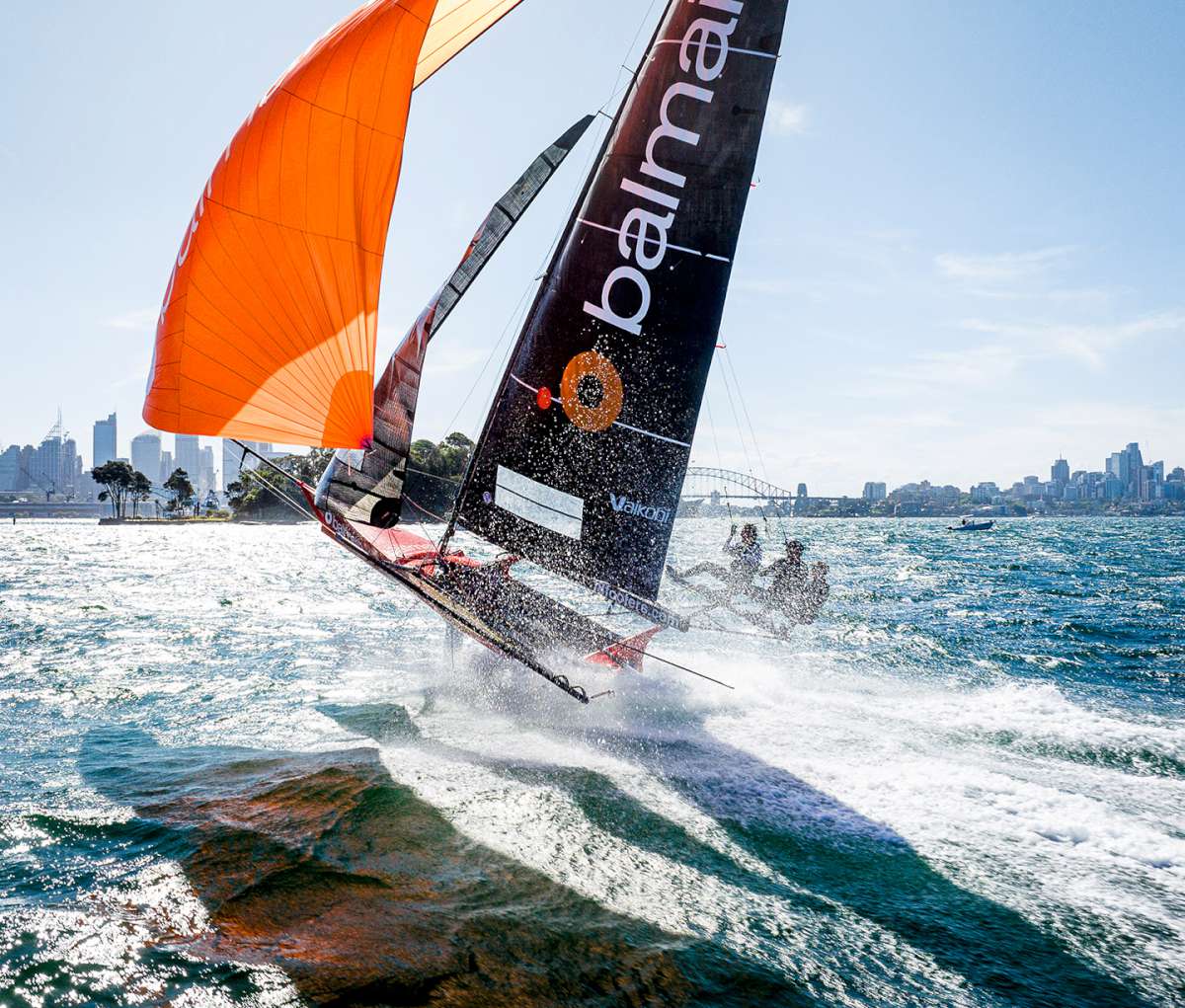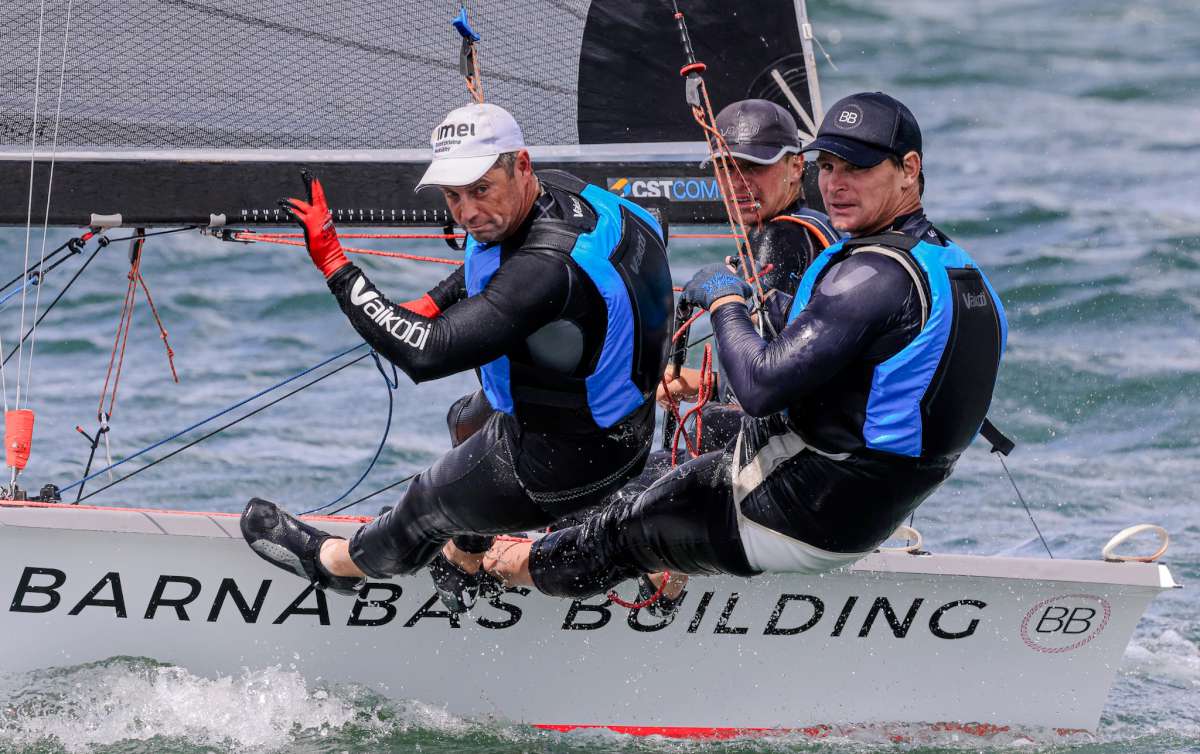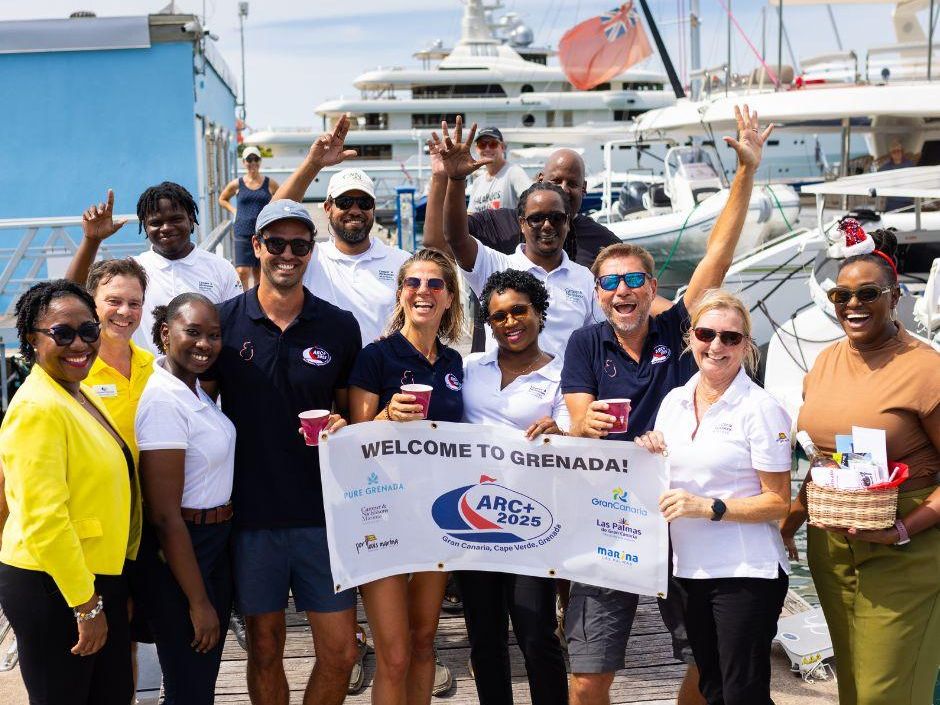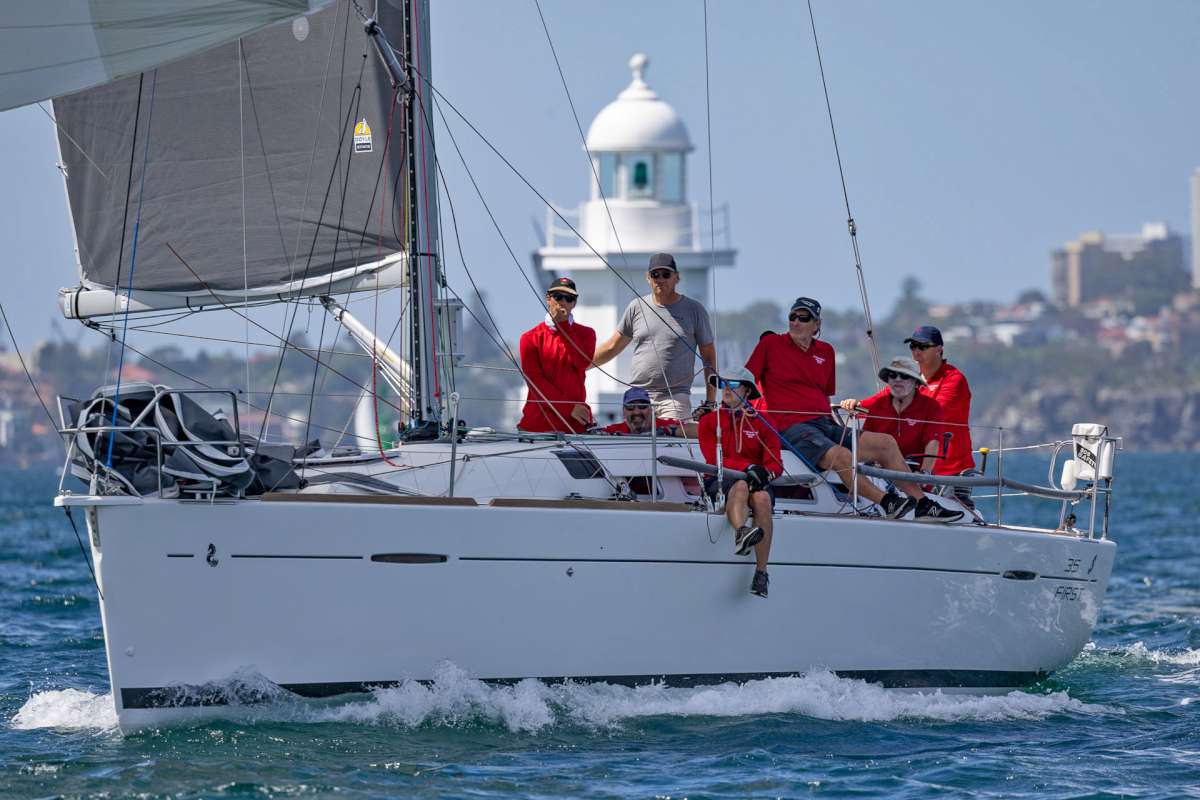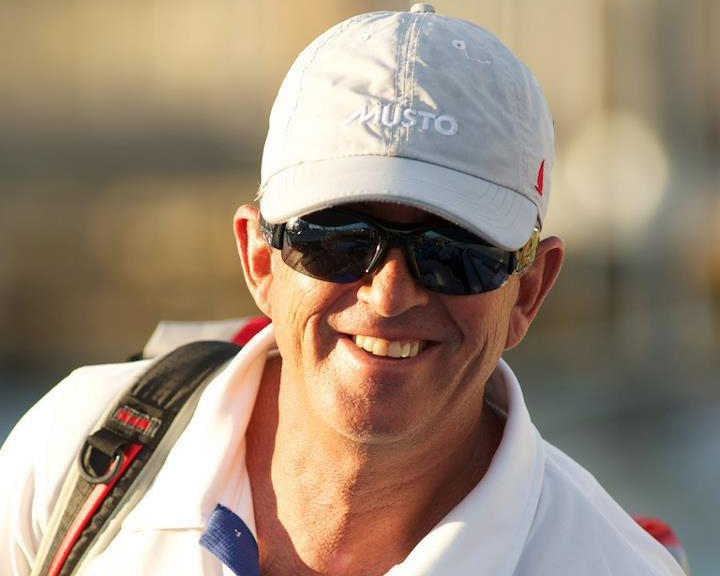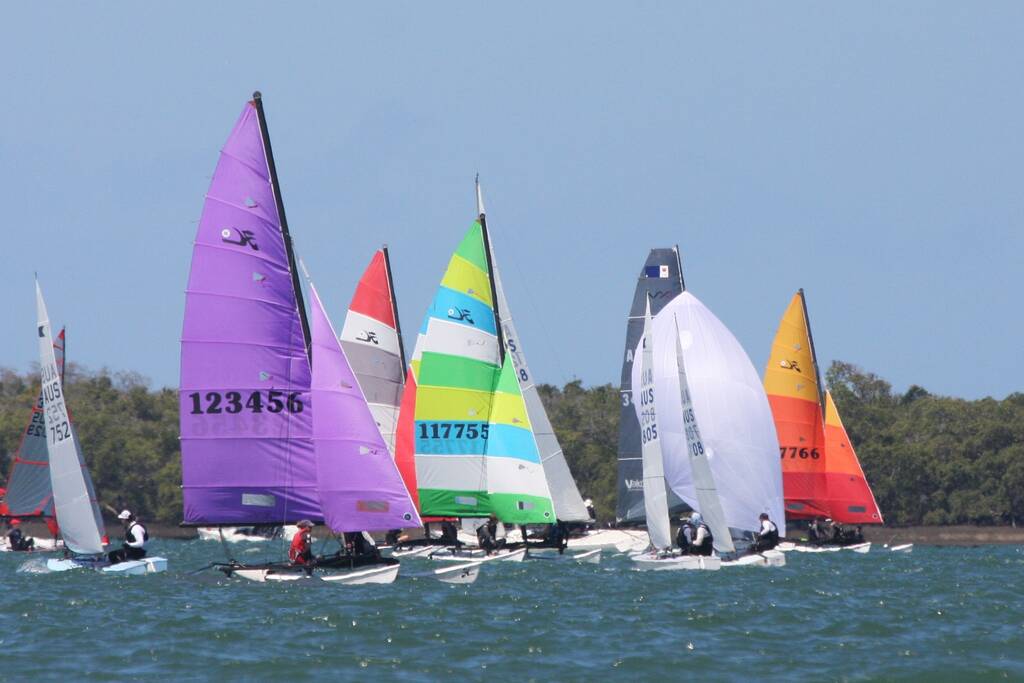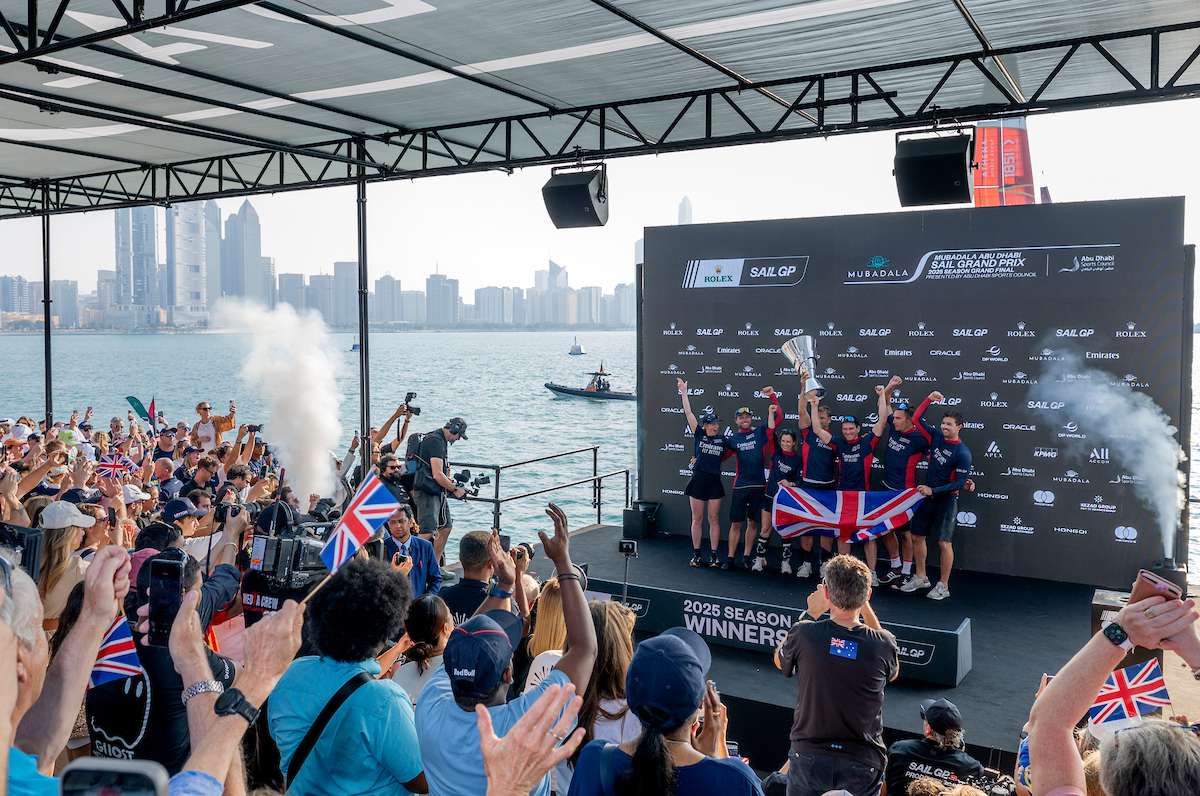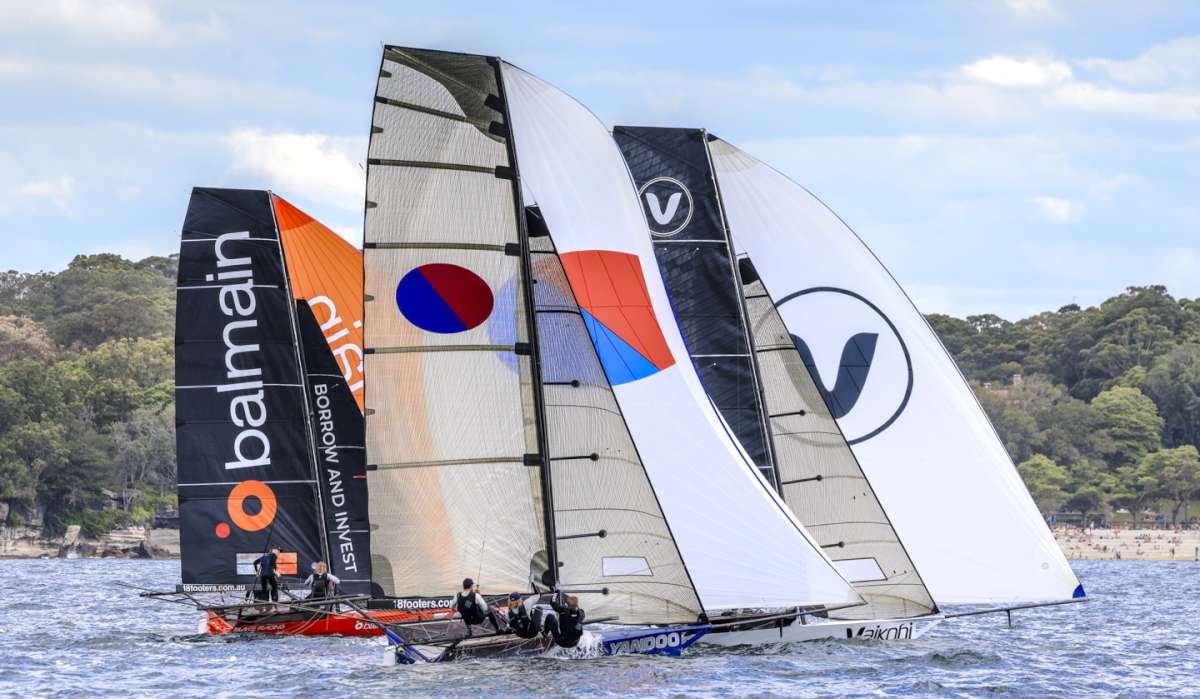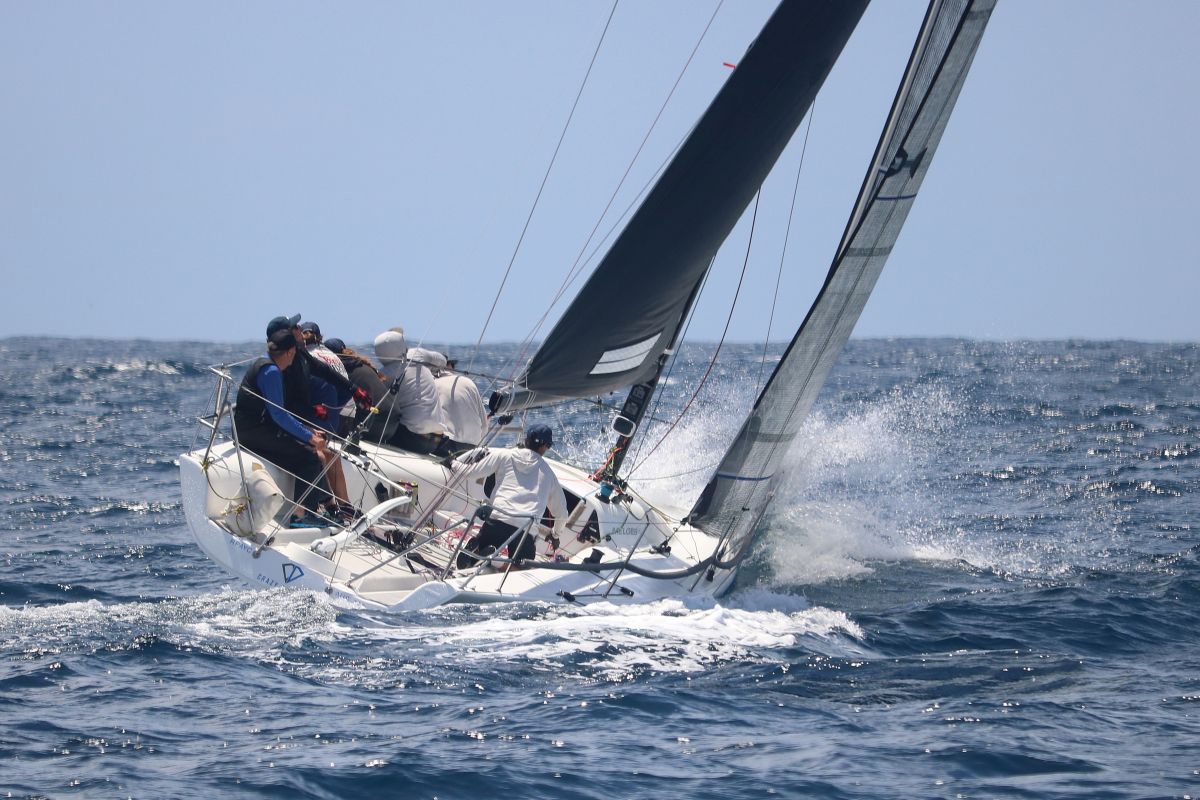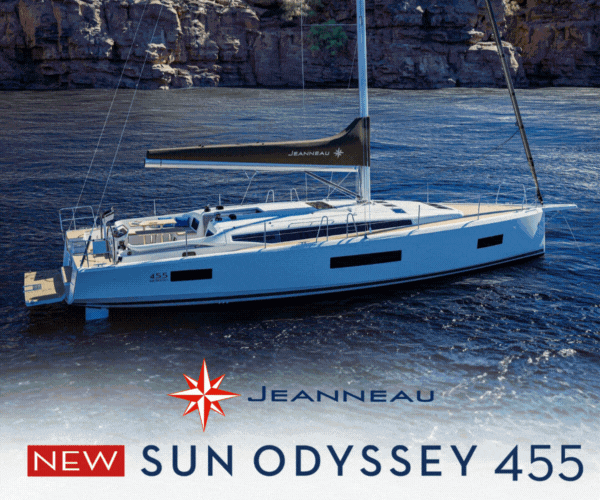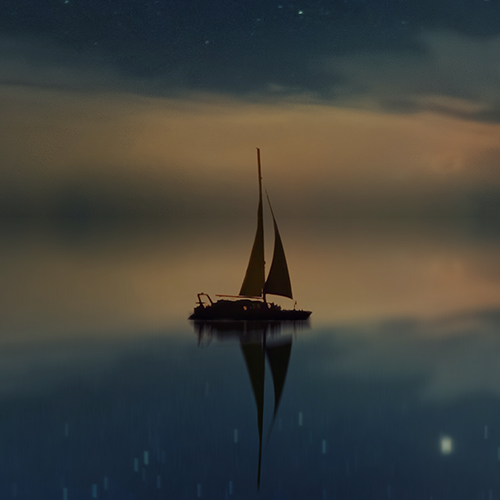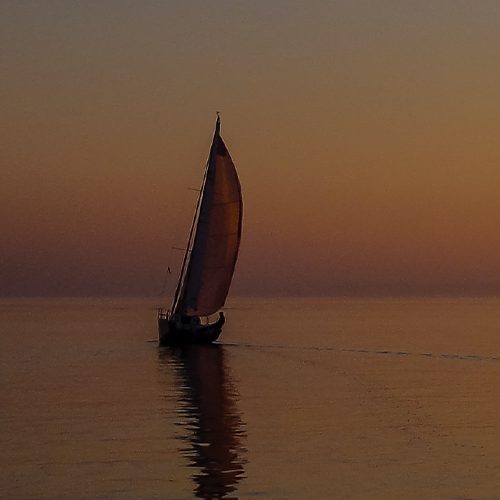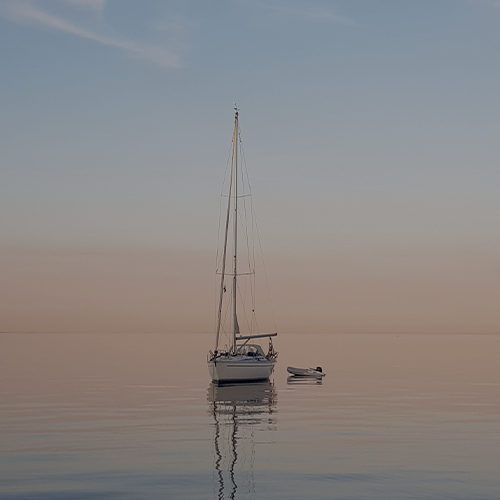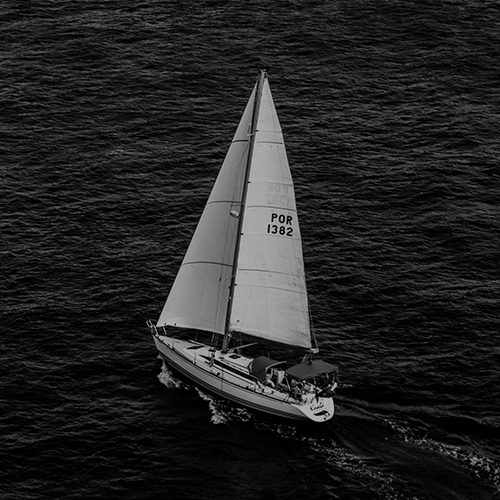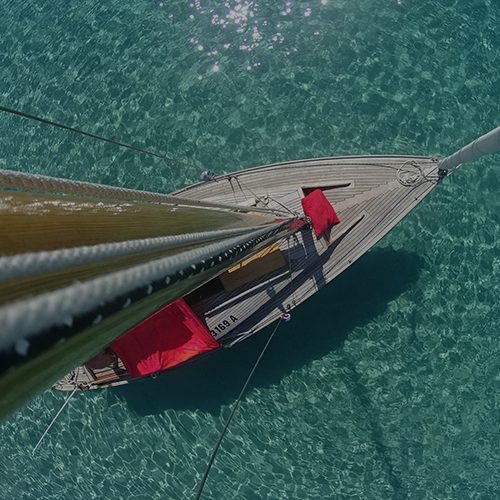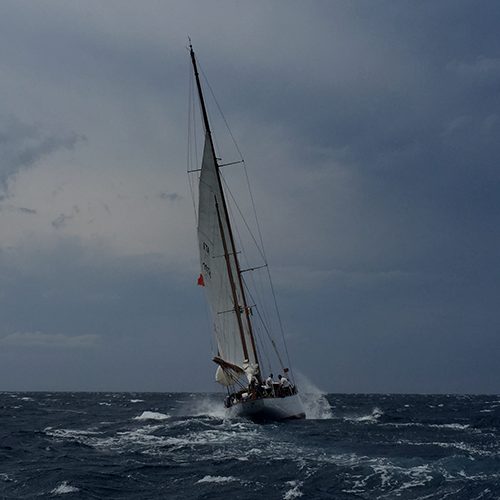1600 CEST, Valletta, Malta. This morning at 11.00, the 46th Rolex Middle Sea Race got underway from Grand Harbour. The gathered fleet was gently propelled out of the magnificent amphitheatre, assisted by an easterly breeze that built as yachts closed on the exit to the open sea. Fringed by limestone bastions and other fortifications, the harbour’s geography played its part with frequent lulls and gusts, as the wind created opportunity and caught out the unready. 117 yachts crossed the start line in seven groups, each departure dramatically marked by the sound of cannon fire from the Saluting Battery high above the water. By late afternoon, the leading competitors were closing on Capo Passero on the southeast corner of Sicily.
Just as last year, the weather forecast was the primary focus on the docks as yachts made their final preparations. The low pressure predicted to leave the North African coast and make its way northeast into the course area was still a threat. The models still exhibited some divergence about the precise impact on the fleet. A few hours in, it is too early to be sure whether the gloomy picture painted last night of storm-force winds and heavy rain on Sunday would directly affect the racing yachts. Tomorrow will reveal all.
Leading on the water, the maxi multihull Allegra (SUI) is a custom Nigel Irens design with a creditable pedigree of offshore racing success. Racing skipper Paul Larsen, still the fastest human under sail, had this to say ahead of the race: “This is unfinished business for Allegra. It’s looking quite light and variable for the start. The one thing we can be certain of is the uncertainty. The weather router was saying it could be light and variable from the north…or the south!” Allegra’s previous participation in 2018 ended in the Messina Strait. The crew are looking to dislodge that memory this year. Since leading off the line, the team has put five nautical miles into closest rival Falcon, the foiling DNA F4 (ITA).
In the monohull fleet, the Reichel-Pugh designed Black Jack 100 (MON) leads on the water from the Mills 72 Balthasar (MLT). The 100-foot (30.48m) maxi’s greater waterline length and sail area eventually saw Remon Vos’s crew catch and pass the Louis Balcaen-led 72-footer just at the exit to Grand Harbour, and build a 5nm lead. Just being ahead will settle nerves, with a long and technical night ahead for the front runners, some of whose models were putting them passing Stromboli in the early hours of Sunday morning. Balcaen’s experienced crew gave him the perfect birthday present, cracking off the middle of the line at pace and leading until the inner breakwater.
Jon Desmond has reported in from his Judel/Vrolijk 52, Final Final (USA): “Cracking our way up to Sicily. Pretty awesome start, wild with cannon fire and all that jazz. JT (Jim Turner, former Olympian and an America’s Cup figure), SiFi (Simon Fisher, two-time winner of the Ocean Race) and the boys did a good job getting us front row, so pretty sweet. The wind’s about 50 degrees true, but we keep getting headed. Still in the front pack, things are going good, but it could be a challenging night. We’ll see.” Indeed, we will.
Multihull Start
First away were the five multihulls. Aldo Fumagalli with his Rapido 53XS Picamole from Italy was the lone competitor in this category last year. Whether the Italian regular enjoyed the company is hard to say. Fumagalli certainly was not intimidated as the clock ran down to the start time, and crossed in good shape quickly separating from the more cruising oriented Alibi 54 Eleven (FRA) and the Outremer 5x, Luke Seawalker (MLT). The more powerful and nimble Allegra and Falcon naturally led the group out of the harbour. According to MOCRA and the tracker, Allegra leads on time correction from Picamole and Eleven.
Start 2
The second start was the largest with 25 yachts, including the two Jarhead Young Sailors Foundation crews from Malta, the J/109s JYS Jan and Jarhead. Both crews feature teenagers, with JYS Jan in particular including two 15-year-olds and two 16-year-olds. Parental permission is required for any sailor under 18, and the JYS programme has proven time and again capable of developing youngsters to take on the rigours of an offshore race. Many alumni are spread through the fleet. Four double-handed entries – K’Mena (ITA), Lunatika (ITA), Mareamore (ITA) and the classic Mowgli of Portsmouth (GBR) – demonstrated the spirit of this group of small and slower yachts, who face five or more days at sea. And may be most affected if the forecast low pressure brings the feared strong winds.
In terms of the race for the main prize determined under IRC, George Greer’s Arcona 380 Kiboko Tatu (USA) leads IRC 6 after time correction. On the water, Richard Laver’s Elan 450 Emily of Cowes (GBR), sailing with his Lloyd’s of London crew, holds the physical lead and sits second overall. Adding classic beauty to the fleet, Paolo Cane’s Valentina (ITA), a stunning Carlo Sciarrelli–designed wooden ketch, is third.
Start 3
More double-handers helped fill the ranks of start three, including Jeremi Jablonski’s Hanse 430 Avanti from the United States. This was the first time in Malta for the crew, but they showed no nerves despite the tight confines, crowds lining the shore and the crack of the guns marking each start. At the other end of the experience spectrum appeared local yacht Calypso, the Farr 30 led by Seb Ripard and Dan Calascione. This seasoned team on the smallest yacht in the fleet were outgunned, though, by the Podesta siblings on Elusive 2 (MLT). Christoph Podestà expertly helmed the First 45 through the mêlée on the line.
After the picture-perfect start in Grand Harbour, Elusive 2 has extended its advantage in IRC 5, even mixing it with the IRC 4 fleet that started 10 minutes earlier. Michael O’Donnell’s J/121 Darkwood (IRL) is their closest rival, about two miles astern, while Gianrocco Catalano’s First 40 Mon Ile (ITA) sits in third.
Start 4
The fourth start was marked out by the four ClubSwan 42s, all steaming off the line to the front of the pack. Dominique Tian’s Glen Ellen from France and Valentin Oeru’s Lion Story from Romania made confident departures from the pin end, at Fort St Angelo. Renzo Grottesi’s BeWild (ITA) and the Sandro Montefusco skippered Aboat Time (BUL) were just behind. Local interest lay with Jonathan Gambin’s Ton Ton Laferla (MLT) among others, while the smart money was watching Géry Trentesaux’s Long Courrier, a winner here in 2018 and packed with French offshore talent.
The Rolex Middle Sea Race may cover 606 nautical miles, but getting away cleanly from the start is crucial. It builds momentum, confidence, and tactical freedom when the fleet is still tightly packed. A fast start means clear air and the ability to choose your own lane. With the IRC 4 class leaders around 25nm from Capo Passero, the early front-runners from Grand Harbour remain locked in a close duel. Taavet Hinrikus’ MAT 1220 Nola (EST) is narrowly ahead, holding the lead on corrected time, while BeWild is matching the Estonians for pace. Both yachts were making around eight knots on a tight fetch.
Start 5
Start five marked the introduction of some larger yachts. The classic lines of the Swan 651 Lunz Am Meer, crewed by a largely Maltese team, contrasted nicely with the more modern Swan 66 Salpare from New Zealand. Stormvogel (GBR), the oldest yacht in the fleet and line honours winner in 1968 and 1969, graced the spectacle, while the Lift 45 Maxitude (FRA), a 2025 launch, offered a glimpse of the innovation that typifies the sport. Artie III and Otra Vez, two more local entries, brought their fan bases to the scene, and their respective performances will be the subject of enthusiastic debate within the bar of Royal Malta Yacht Club over the coming days.
As we move into early evening, IRC 3 sees Aboat Time leading from Artie III and Gilles Caminade’s Chenapan IV (FRA), on its fifth successive race and with a stack class podium results to rely on.
Start 6
The sixth start saw the powerhouses appear. This pack of feral 50-footers could easily deliver the race winner, such is the array of skill and commitment on display. Daguet 5 from France was striking in green, Final Final equally recognisable in blue. The black of Ràn 8 (SWE) gave a stealth-like image, while the Django Deer hull-scheme offered some Italian style. It was Quentin Stewart’s Maverick, one of the smaller in the group, that hit the line on the gun, a reminder of the Infiniti 46’s form that took the Guernsey yacht to third place overall in 2016.
As IRC 2 approaches Capo Passero, Zen (AUS) leads on time correction from Gerard Logel’s Arobas2 (FRA), one of the older boats in the class. Final Final holds onto third. Speaking on the dock, Ollie Guanaria, a 15-year crew member on Zen, had this to say: “I’ve seen videos of the start from Grand Harbour – the cannons, the crowds, the echo off the walls – and I can’t wait to experience that moment for real. From what I’ve heard, the conditions should be pretty good for our first one and some beautiful scenery along the way. It’s a big adventure, and I’m just looking forward to learning a lot and enjoying every mile.”
Start 7
Last, but impossibly not least, the big guns came out in start seven. Balthasar and Black Jack vied for the bragging rights of first to exit, while the remaining eight yachts – all over 60 ft – settled in for the long haul. Ahead of the start, Bouwe Bekking, on Balthasar, commented: “Everyone’s feeling that mix of excitement and focus that comes with the start of a great offshore challenge, The forecast is changeable, a low-pressure system moving up from Tunisia could bring heavy rain and thunderstorms. It’s going to be a tactical race rather than a fast one.” The Australian entry Whisper was well up to the fore, with Varuna VI close behind. The pair of VO65s, including the much-celebrated Chinese-crewed Kranendonk made sedate departures. The striking Nacira 69, 12, brought up the rear and was the last yacht to leave Grand Harbour.
Near Capo Passero, Black Jack has the lead on the water but, true to last year’s class winning form, Balthasar leads on time correction from Whisper and Varuna VI.
Double-Handed
Double-handed racing has long been a hallmark of the Rolex Middle Sea Race, demanding endurance, precision, and trust between just two sailors. As we enter the evening of the first day, it is an all-Italian top three. Marco Paolucci’s JPK 1180 Libertine, sailing with Niccolò Bertola, leads the class ahead of Guido Baroni’s Sun Fast 3600 Lunatika and Beppe Agliardi’s First 47.7 Audace (ITA), co-skippered by Pasquale Volpe.
With Capo Passero only 55nm into the race, there is considerable ground to be covered and many more stories to come. Over the next 24 hours, the fleet can expect a full mix of Mediterranean conditions. Strong easterlies should hold through the evening as the yachts push towards Capo Passero, giving a fast and lively run up the eastern coast of Sicily.
As night falls and the leading boats enter the Strait of Messina, the breeze is forecast to ease and shift to a lighter north-easterly, bringing a slower and more tactical phase overnight. Crews will need to stay alert as local effects through the strait could produce unpredictable patches of wind and current.
Conditions look light north of Sicily tomorrow (Sunday), with the northeasterly persisting. The approach to Stromboli will be especially tricky, a real game of patience and precision. With soft airs expected along the north Sicilian coast, the fleet could compress dramatically, turning this segment into a strategic battle of positioning and breeze-hunting.
#RolexMiddleSeaRace #Sailing #YachtRace #OffshoreSailing #Malta #SailingLife
More Offshore Sailing stories: Click here




